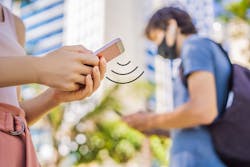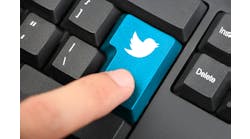In L.A. County, Public Health Leaders Take Another Swing at Contact Tracing
Contact tracing has been a massive undertaking in the U.S. so far, and with COVID-19 cases continuing to surge upwards of 200,000 per day, the job won’t get any easier. Although identifying individuals who may have come into contact with an infected person and then collecting data on these contacts is considered a key element to help curtail the pandemic, these efforts have been littered with challenges to date.
A recent survey from Pew Research Center of more than 10,000 U.S. adults, for instance, found that only half of respondents said they would be comfortable or likely to engage on the three key steps involved with contact tracing—speaking with a public health official, or contact tracer, who reached out to them about COVID-19; sharing the names of people they have had close contact with as well as the places they have recently visited; and willing to quarantine for 14 days if they were advised to.
Indeed, contact tracing is the last two-thirds of public health leaders’ “test-trace-isolate” strategy, but in the U.S. so far, the results have not been there. A Reuters survey of 121 local agencies, published in August, concluded that the U.S. “badly lags other wealthy countries in contact tracing, including South Korea and Germany, which ramped up their programs months ago. Contributing to the faltering U.S. response is the government’s failure to provide accurate and timely diagnostic testing, something other countries were able to roll out much faster and more broadly,” that report noted.
In California, healthcare leaders recently rolled out CA Notify, a new digital contact tracing tool that was made available to all Californians starting Dec. 10. The tool was developed in partnership with Google and Apple, and piloted with the help of the University California, San Diego and the University of California, San Francisco. California residents can enable CA Notify in their iPhone settings or on Android phones by downloading the CA notify app from the Google Play Store, and when the app is downloaded, users can opt-in to receive COVID-19 notifications informing them if they have been exposed to someone who has tested positive for the virus. State officials contend that the digital tool protects privacy and security, does not collect device location to detect exposure, and does not share a user’s identity.
Back in April, Apple and Google announced a joint effort around contact tracing leveraging Bluetooth technology. As of late-November, only a handful of U.S. states had contact tracing options for iOS and Android, although several more deployments could be in the works. California, via its CA Notify solution, has now become the largest state to join the Apple-Google contact-tracing initiative thus far.
When individuals voluntarily activate CA Notify, the tool uses Bluetooth technology to exchange random codes between phones without revealing the user’s identity or location. If a CA Notify user tests positive for COVID-19, they will receive a verification code to plug into the app, if they choose. Any other CA Notify users who have been within 6 feet for 15 minutes or more of the COVID-19 positive individual will get an anonymous notification of possible exposure, explained officials from California Gov. Gavin Newsom’s office.
Another organization joining the fight to stop COVID-19 spread is Healthvana, a patient engagement solutions company that is working with the Los Angeles County Department of Health Services on rolling out a solution enabling individuals with a positive test to immediately and anonymously notify anyone with whom they have recently come in close contact, using their mobile phones.
Los Angeles County has partnered with Healthvana since April 2020 on the delivery of test results for county-operated sites; test result notifications are sent via text message or email the moment the lab processes the sample. With this new added feature, individuals who receive a positive test result can simply click a link within the web-based patient portal to enter contact information for any recent close contacts. These close contacts instantly receive a notification from Healthvana alerting them that they may have been exposed to COVID-19 with links to resources, including locations where they can schedule a free COVID-19 test. The contact tracing feature will be initially rolled out to county-operated testing sites, according to county officials.
One of the most important elements of this solution is that the Healthvana notifications to close contacts come in minutes or hours, rather than days, meaning there is a real opportunity to act right away as time is of the essence, says Clemens Hong, M.D., director of whole person care with the L.A. Department of Health Services, which oversees the county’s testing sites. Like many others, Hong believes that engagement is the most critical piece to any contact tracing strategy, because without it, no tool can make up for non-committed users. In the first four weeks of the tracing program, more than 3,000 people were notified of an exposure within hours from when the original positive test result was recorded. And the vast majority of those 3,000 individuals open the exposure notification within five minutes. “So it pretty much touches just about everyone within the first day,” says Hong. What’s more, about 30 percent of the close contacts who received a notification click on a link to access a COVID test.
At the same time, Hong acknowledges that the 3,000 users who received notifications represent just 3 percent or so of the COVID-positive users. “So of the individuals who received a COVID test, 3.5 percent of those who were positive entered a contact [in the Healthvana app]. The majority of those who engage do enter [that information] within the first hour, but it's still not reaching a large percentage. So there's a lot of opportunity for us to improve there,” says Hong.
The early data also shows that about three quarters of the most engaged folks on Healthvana are people of color, “and that’s where we've seen an overwhelming number of infections, as [the virus] has had a disproportionate impact on people and communities of color,” says Hong. The other data point he refers to is that respondents are notifying 1.3 contacts on average, “and if you look at our county data, that's almost double what we have been seeing in terms of people who are notified. So maybe there’s something about the anonymity [of this app] that’s encouraging people to add more contacts,” Hong speculates.
Is there a “right” contact tracing strategy?
So far, there doesn’t seem to be a one-size-fits-all solution to contact tracing in the U.S., with a big reason being that state and county resources can’t keep up with the surge in positive cases. Some are even asking residents to do their own tracing and notifying.
There were several common challenges and barriers to contact tracing mentioned in the aforementioned Reuters report, including: efforts to simply reach people who tested positive, let alone interview them; a lack of sufficient staff and funds; and technical problems and poor coordination. Per the report, one local health director in Wisconsin said responses her team got when calling positive patients ranged from “yelling and hanging up, to those telling us that they have already contacted all of their friends and will not give us those names.”
The Pew research reinforced this anecdote in its survey, as just 19 percent of Americans said they generally answer their cellphones when an unknown phone number calls. About 67 percent said they don’t answer, but would check a voicemail if one is left. And 14 percent said they generally don’t answer and would ignore a voicemail. On the ground, some state leaders are quickly realizing this reality. In early December, New Jersey Gov. Phil Murphy reported that the number of New Jerseyans with COVID-19 who refuse to cooperate with contact tracers continues to grow; recent data showed that 74 percent of cases do not give information about recent contacts with others to government health employees who call them. Murphy called the non-cooperation “unacceptable.”
Although not the norm, there have been some pockets of tracing success in the U.S. In San Francisco, more than 83 percent of COVID-19 cases and contacts are reached on a regular basis, according to a late October ABC News report. In September, more than 1,600 COVID cases resulted in tracing more than 1,700 contacts. Close to 60 percent of those contacts then got tested, representing a significant jump from four months prior, according to that report.
The U.S. has more than 50,000 contact tracers for the first time since the coronavirus pandemic hit, according to an October survey of states conducted by the Johns Hopkins Center for Health Security in collaboration with NPR. Public health experts have previously called for 100,000 contact tracers nationwide, a number that’s also been mentioned by incoming president Joe Biden.
This is where some experts believe that digital apps could help fill the gap by automating the contact tracing process, but thus far there have mostly been low adoption rates and stymied progress. In Nevada, for instance, despite state authorities strongly recommending that residents download their contact tracing app, just 3 percent of the adult population has so far, and not a single exposure was registered in the app throughout the month of September, during which the state reported more than 10,000 new cases, according to a November report in Time.
Hong believes that a combination of digital technology with manual effort is likely the right approach moving forward. The Healthvana solution, he points out, enables the ability to get information out quickly, make contacts aware, and allow them to quarantine. On top of that, two days later they’ll get a call from public health official who can do a much deeper interview that helps authorities identify where the person got infected and whether or not there are outbreaks that need to be chased. “So I think the idea is that these two pieces can really work together to address this, especially right now when we're seeing so many cases,” he contends.
In the end, engagement is by far the most crucial success factor, and to that point, Hong says Healthvana is working on deploying functionality where a second notification is sent out to close contacts 24 hours after the first one—perhaps at a different time of the day—with the goal to get more users and more responses. But Hong also touts that L.A County has already reached 3,000 people with the Healthvana app so far. “If we could have those 3,000 individuals stop spread to two people, you are changing the trajectory, at least within their communities, their families, or their workplaces,” he says.


